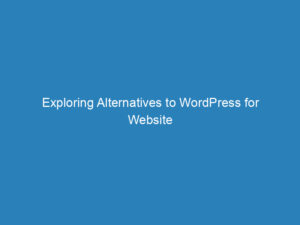
Editing Your WordPress Blog Page: A Guide from Themeisle
Editing the blog page of a WordPress site can often pose a challenge for many users. Unlike traditional pages, the blog page is automatically generated by WordPress to display your latest posts. This page is influenced by the theme you choose, while WordPress also creates archive pages for specific categories or authors.
Understanding the Blog Page Structure
The blog page isn’t simply a static page; it dynamically lists your most recent blog posts. This setup allows your site to maintain a fresh and engaging content flow without requiring constant manual updates. The layout and design of your blog page depend largely on the theme you are using.
Creating a Custom Blog Page
If you want more control over the look and functionality of your blog page, you can create a new page from scratch. Here’s how to do it:
- Create a new empty page in your WordPress dashboard.
- Add this new page to your website’s main menu, or position it in other areas such as the footer or sidebar.
Enhancing Your Blog Page with Plugins
To customize your blog page further, consider installing the Otter Blocks plugin, which is free to download from the WordPress plugin repository. This plugin includes a useful block called Posts, which can be utilized in the WordPress editor.
If you prefer using Elementor as your page builder, you can access a similar feature called the Post Type Grid widget. Both options provide similar functionalities, allowing you to curate how your posts are displayed.
Features of Otter and Elementor
- Post Type Selection: Choose from Posts, Pages, Products, Portfolios, and more.
- Category Filtering: Display posts from specific categories.
- Styling Options: Choose between Grid or List styles.
- Column Layout: Adjust the number of columns for your post display.
- Sorting Options: Organize posts by date, title, or other criteria.
By utilizing these tools, you can create a blog page that not only looks appealing but also functions effectively to engage your readers.
Need Further Assistance?
If you have any questions or need additional support, don’t hesitate to reach out for help. Your blogging journey should be as smooth and enjoyable as possible!
Last updated on September 5, 2024

